Like Pretty Much Everything Wallace & Gromit-related, the New Netflix Movie Vengeance Most Fowl Is Pretty Fucking Great
Aardman Animation has done it again! They've officially topped Pixar as the most dependable and prestigious brand in animation
Stop-motion animation is wonderfully, perversely, and even masochistically human. It is perhaps the most time-consuming and labor-intensive way of doing, well, just about anything.
In that respect, it’s the antithesis of computer animation. Stop-motion animation is the product of sweat, blood, and an insane amount of work and effort, not a collection of ones and zeroes floating around in cyberspace.
So there’s something wonderfully ironic about a stop-motion animated film from the geniuses at Aardman Animation about the cultural cancer of artificial intelligence.
Wallace & Gromit: Vengeance Most Fowl is a trenchant cautionary warning about the dangers of using contemporary technology to make life easier in the short term but ultimately proves counter-productive and destructive.
In the critically acclaimed new Netflix movie Wallace & Gromit: Vengeance Most Fowl, daft inventor Wallace attempts to make life easier for his dog Gromit by creating Norbot, a psychotically cheerful garden gnome powered by the malevolent magic of artificial intelligence.
As the silent voice of reason, Gromit immediately realizes that there is something deeply wrong with Norbot even before he goes to the dark side.
He’s a smiling servant, not just happy but ecstatic to do all the work lazy humans don’t want to bother with. He’s viscerally unnerving and ferociously effective in executing tasks.
Norbot recharges at night in a disconcertingly sexual way that suggests the irritating robo-helper derives obscene, unsavory pleasure from the experience. Gromit is unnerved by it. So are we.
Despite Gromit’s ambivalence, Norbot quickly becomes a neighborhood sensation. He makes quick work of the gardening work in his owner’s backyard.
When Norbot’s freakish efficiency makes the news, the dastardly Feathers McGraw, the unforgettable supervillain from 1993’s The Wrong Trousers, takes notice.
Like Gromit, Feathers McGraw does not talk. He’s silent but deadly, but his lack of dialogue does not prevent him from being one of the great villains of animation history. He’s right up there with Lots-o'-Huggin' Bear from Toy Story 3.
Like Gromit, Feathers McGraw does not need to say anything to make a big impression. In this clay world, silence is a sign of intelligence and jibber-jabbering of silliness, if not stupidity.
Feathers McGraw uses his criminal and technological genius to reprogram Norbot from the zoo that doubles as his prison to create an army of doubles to do his evil bidding and bust him out of jail.
The master criminal is also a master of disguise. He successfully impersonates a chicken by sticking a red rubber glove on his head in a running gag that never stops being funny.
Wallace’s neighbors’ response to the gnome servant squad mirrors humanity’s response to artificial intelligence in general. At first, they’re overjoyed. These smiling, uncomplaining workers do all the work they don’t want to, and they do so with a deeply irritating level of pep.
That’s similar to how we were initially charmed and amused by AI because it could perform stupid computer tricks, like showing us what Gaspar Noe’s Irréversible would look like if it were a Pixar movie or made with Legos.
The residents of Wallace & Gromit’s town’s delight turns quickly into mortification when they discover that in addition to helping with tedious chores, the creepy gnome cabal is stealing from them.
That’s like how AI steals from pretty much everyone to bless us with photographs of vaguely human-looking characters with six fingers on each hand and impossibly flowery prose that unintentionally mirrors the writing style of desperate students who haven’t done the reading and do not know what they’re talking about yet feel compelled to turn in a paper anyway.
Feathers McGraw sends his evil minions to steal from the people they were supposed to be helping as a way of framing Wallace for the theft as retribution for stopping his one-bird crime spree and getting him tossed in the animal equivalent of the hoosegow.
The larcenous waterfowl faces a formidable adversary in Gromit and a less impressive one in Albert Mackintosh (Peter Kay).
The comically inept copper was introduced in 2005’s The Curse of the Were-Rabbit as a Police Constable. Despite being the most incompetent lawman this side of The Simpsons’ Chief Wiggum, he nevertheless received a big promotion to Chief Inspector.
Chief Constable Albert Mackintosh’s defining characteristic is his laziness. He wants to do as little work as possible while maintaining his prominence in the police force.
He’s like people who love AI, wanting to leave all the hard, boring work to others. In this case, that’s PC Mukherjee, a young policewoman of color who is thankfully the antithesis of her superior. She’s ambitious, diligent, and cares deeply about her job, whereas her boss is intent on coasting until he reaches retirement and can collect money from the government for doing no work whatsoever.
Feathers McGraw wants to frame Wallace so that he can purloin the Blue Diamond, the expensive jewel from The Wrong Trousers.
In the tradition of Aardman Animation, Vengeance Most Fowl is gloriously cinematic. Much thought and consideration went into making every shot and scene as dramatic and striking as well as funny, as possible.
Wallace & Gromit may be beloved pop-culture comfort food for animation enthusiasts worldwide, but there is a lot of darkness lurking just under the surface and, sometimes, on the surface. There’s a reason this is PG instead of G.
The scenes with Feathers McGraw in confinement have a Cape Fear feel. Vengeance Most Fowl is as satisfying as a thriller as it is as a very droll, very British comedy. If it were up to me, Wallace & Gromit would be on English pounds instead of those sketchy royals because they are England’s most beloved exports.
There are moments in Vengeance Most Fowl when it feels like the movie would have been better as a short film. Vengeance Most Fowl might have debuted on Netflix, but it is a proper motion picture. It’s a shame that I could not see it in a movie theater, but there is much to be said for movies you do not have to wear trousers or leave your home to see.
Like previous Wallace & Gromit adventures, Vengeance Most Fowl is chockablock with puns and wordplay. Puns are famously the lowest form of humor, except for prop and sound effects-based comedy. If a comedy act depends on audiences guffawing at a slide whistle or a sad trombone, it’s probably not good.
Instead of nudging audiences in the ribs, Vengeance Most Fowl respects audiences enough to let them find background gags for themselves.
This is the first Wallace & Gromit project since the death of Peter Sallis, the original voice of Wallace. He would have been proud of Vengeance Most Fowl. Like pretty much everything involving Wallace & Gromit, it’s pretty fucking great.
God bless the hard workers of Aardman Animation. They accomplish miracles through hard work and dogged dedication rather than relying on the sinister shortcuts and creepy cheating that characterize AI in nearly all its forms.
Four and a half stars out of five




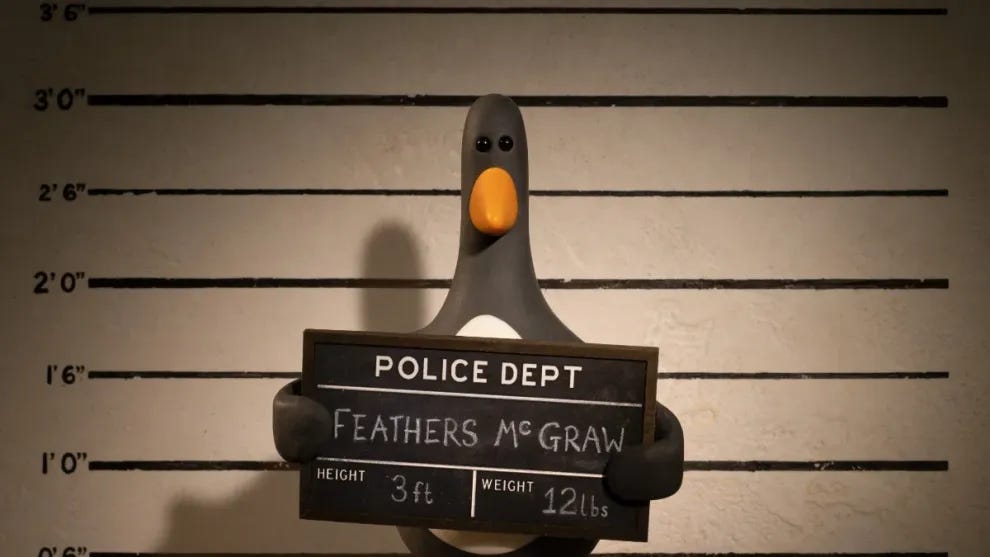
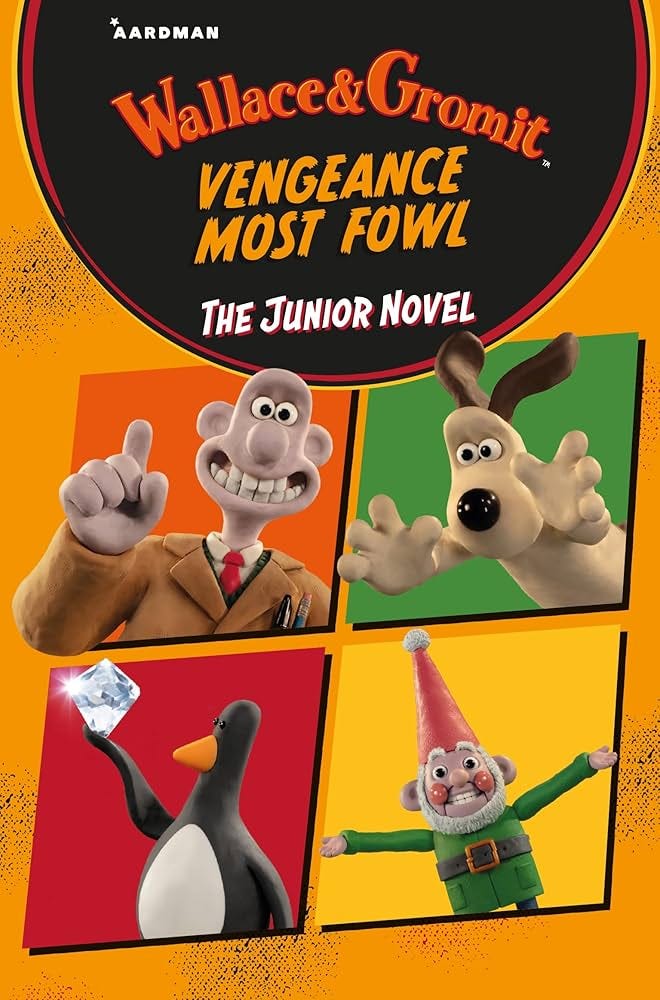

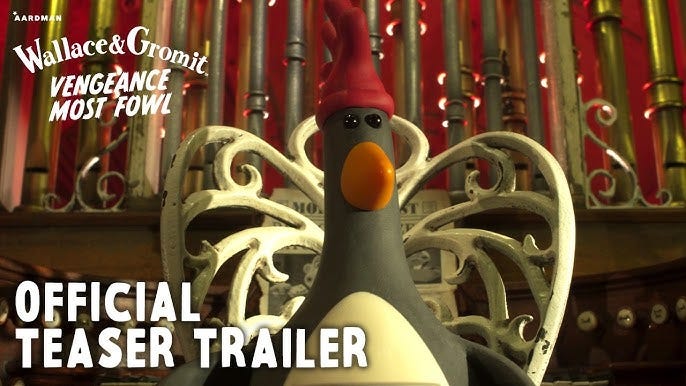


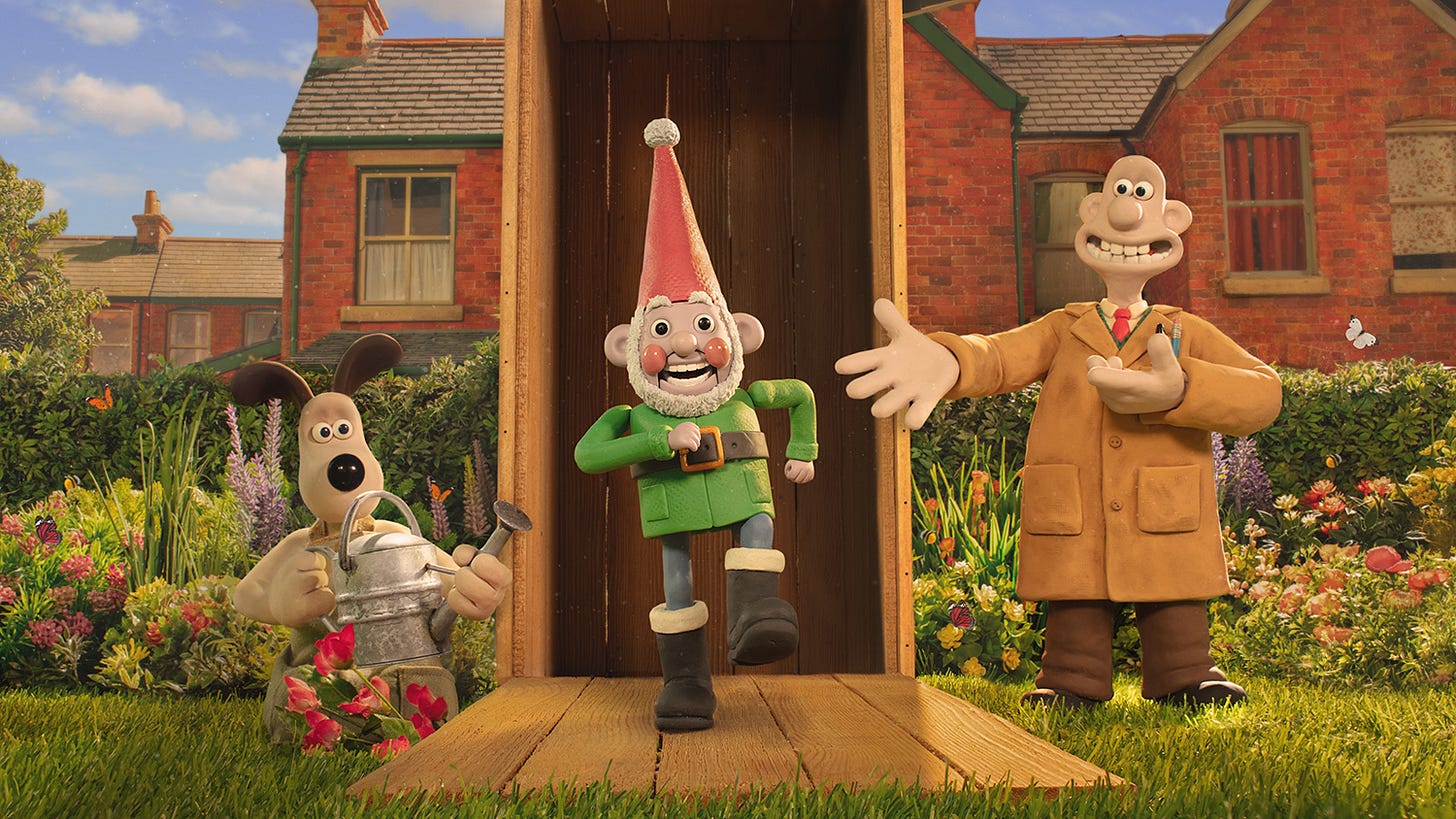
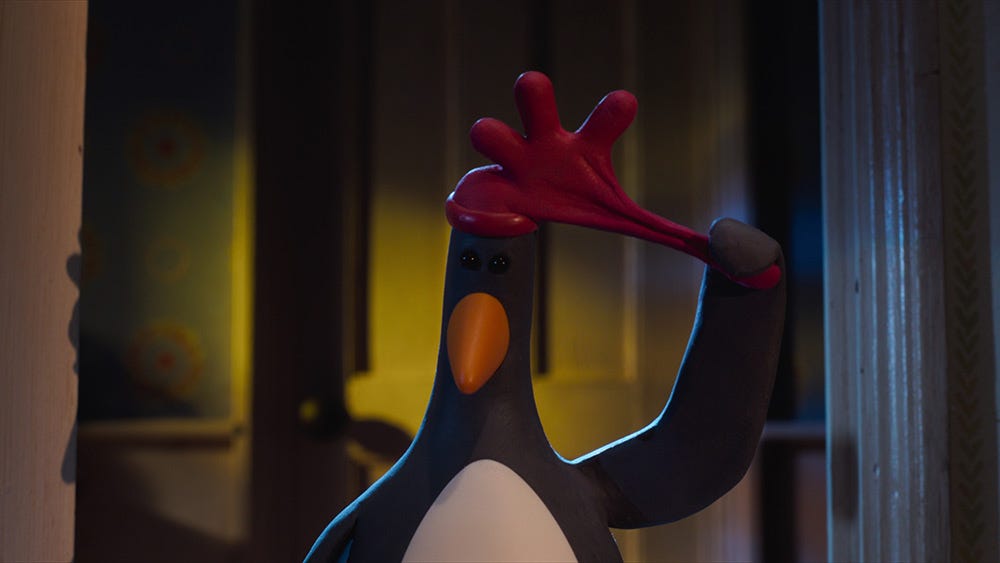

::As the silent voice of reason, Wallace immediately realizes that there is something deeply wrong with Norbot even before he goes to the dark side.::
Don't you mean "Gromit" as the silent voice of reason—something Wallace has never been?
The thing I liked most about this is that it focused on the relationship between Wallace and Gromit rather than trying to come up with a human love interest, as they've been doing since A Close Shave. It's nice to have a story about old-fashioned friendship.
My wife has been watching Last of the Summer Wine, and I really enjoy hearing Peter Sallis do that Yorkshire accent, even if it's a totally different character.